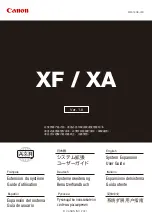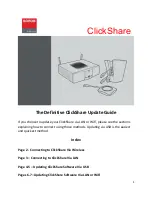
EWB100 Usage and Deployment Guide
Rev 1.13
Page 18
4 The Command Line Interpreter
4.1
Basic Concepts
The CLI on the ewb100 is used for a wide variety of functions including
configuration, updates, diagnostics, and maintenance. Its primary use, though, is
for configuring the device. The interface is very simple; it features one line
commands consisting of a key word and zero or more parameters. Most
commands take effect immediately.
The CLI is always available on the device and can be reached from a variety of
sources:
USB
Telnet
HTTP
Command Files
MSP
The CLI is the key to configuring the device since it is the only way to access the
configuration data base. Configuration commands may be entered one at a time
or in a sequence. This later technique is used in conjunction with the Airbeam or
MSP client.
4.2
The CLI and the ConfigurationData Base
The Configuration data base contains all the configuration information for the
EWB100 device. It is stored in a special area of flash memory. Configuration
changes are stored as changes from the default value. When the configuration
data base is erased, the system returns to the default values for all the
configuration parameters.
There are three different configuration areas in flash: two for user defined
information and one for manufacturing information. Multiple changes to the same
configuration value will result in prior values in the flash being invalidated and
new entries being created.
Hence configuration areas can “fill up” with invalidated
data. Only one of the user defined areas is used at a time. When one area
becomes full (usually because to too many invalidated values), all the valid data
in it will be copied to the other area, which then becomes the current
configuration data base and the other area erased. No such mechanism exists
for the manufacturing area, since the data values are seldom altered. The state
of configuration memory is shown via the “st cfg” command.
User Defined Defaults is a mechanism by which the default values of certain
configuration parameters may be set by the user. These user defined defaults
will override the runtime default values when the device is restored to “factory
defaults.” They are limited to a few subsystems and parameters within those
subsystems. The goal of this feature is to allow a device to upload new
Summary of Contents for TEAM Badge (EWB100)
Page 12: ...EWB100 Usage and Deployment Guide Rev 1 13 Page 12 ...
Page 37: ...EWB100 Usage and Deployment Guide Rev 1 13 Page 37 ...
Page 39: ...EWB100 Usage and Deployment Guide Rev 1 13 Page 39 ...
Page 49: ...EWB100 Usage and Deployment Guide Rev 1 13 Page 49 set pr rxwttmask 0 z where z 1 x 1 1 y 1 ...
Page 57: ...EWB100 Usage and Deployment Guide Rev 1 13 Page 57 ...
Page 134: ...EWB100 Usage and Deployment Guide Rev 1 13 Page 134 Wait while the driver installs Wait ...
Page 146: ...EWB100 Usage and Deployment Guide Rev 1 13 Page 146 ...
















































